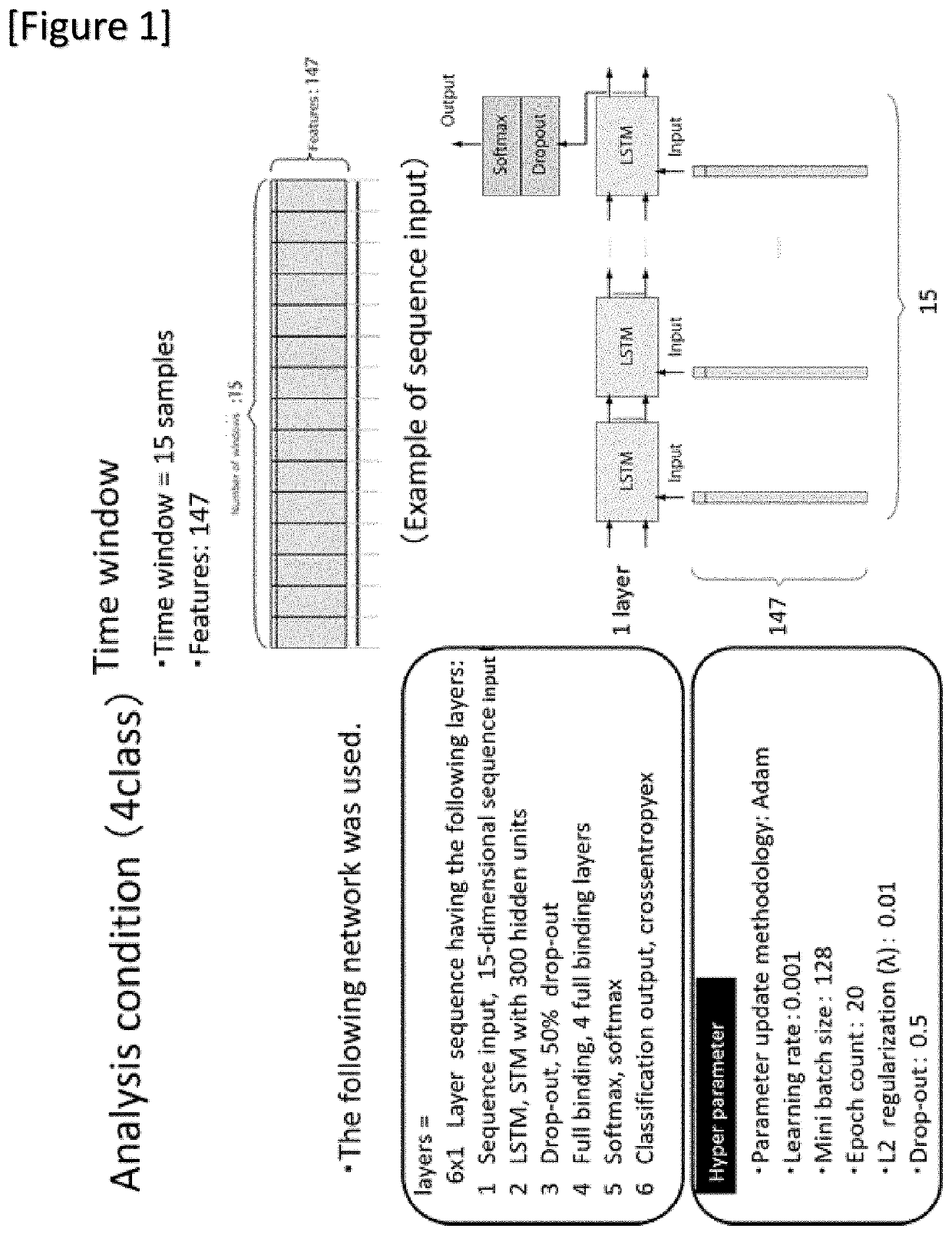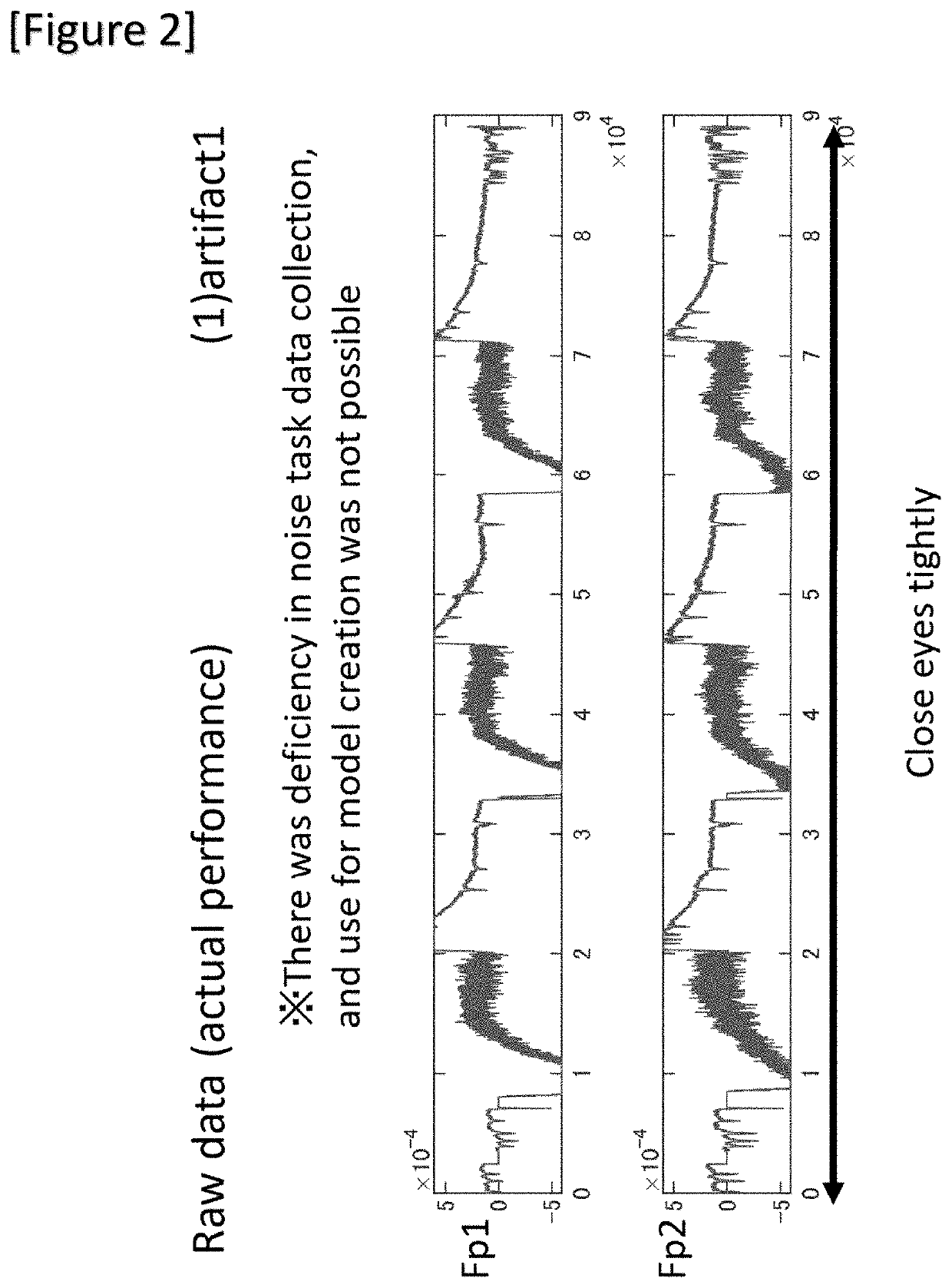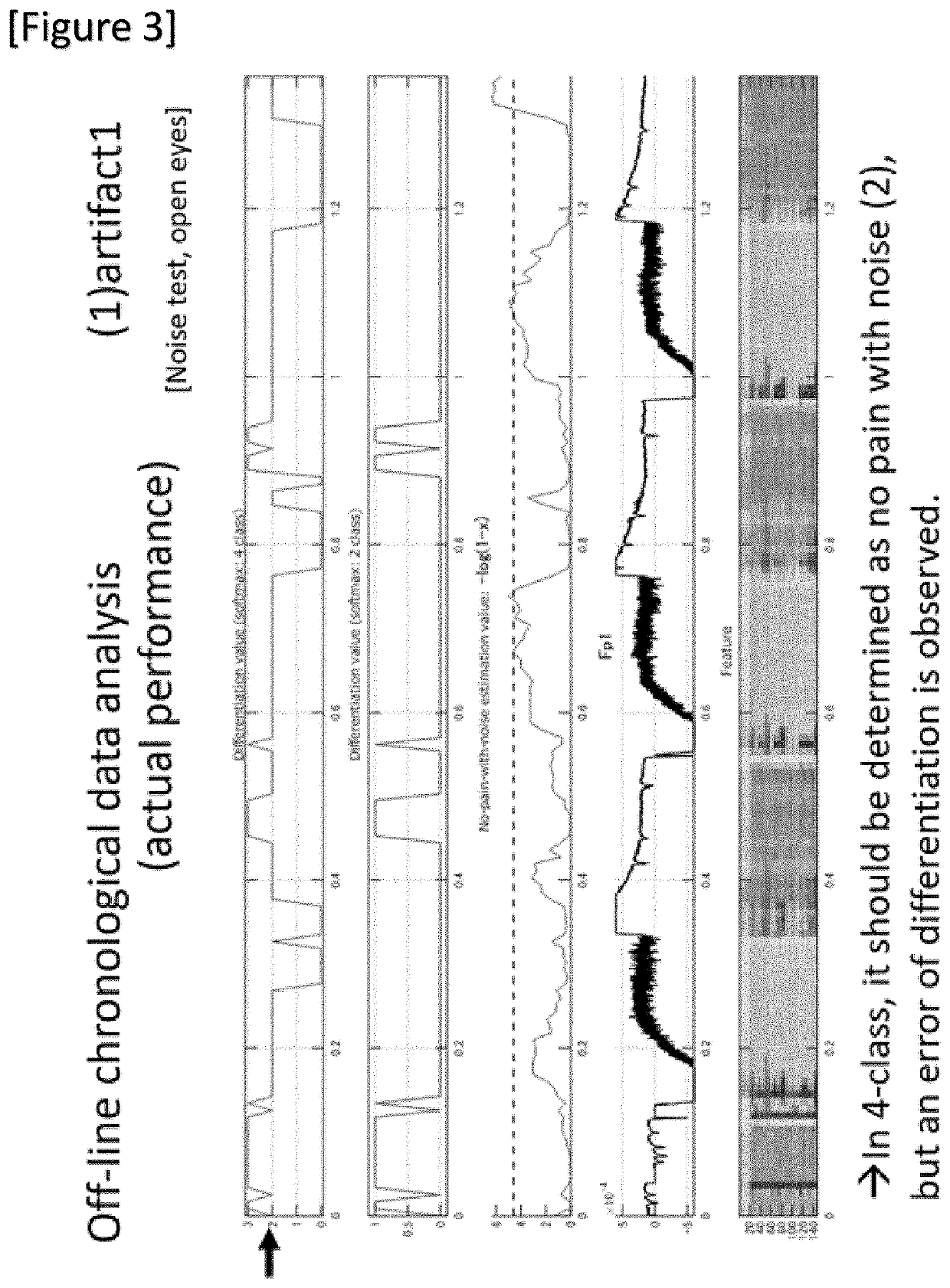Reference stimulus
a reference stimulus and signal processing technology, applied in the field of reference stimulus, to achieve the effect of not being able to remove nois
- Summary
- Abstract
- Description
- Claims
- Application Information
AI Technical Summary
Benefits of technology
Problems solved by technology
Method used
Image
Examples
example 1
Closed Eye Sample Augmentation
[0219]In this example, an experiment of closed-eye sample augmentation (Long short-term memory (LSTM) 4 class) was performed. The method and the like will be described below.
[0220](Method 1)
[0221]The four classes, “no pain•having pain•no pain with noise•having pain with noise”, were differentiated using LSTM. Noise tests and noise tests during pain stimulation were performed to label the class including noise. Subjects had their eyes closed in some trials (eye-closing task). The conditions of the experimental trial conducted are described below.
Experimental Trial:
[0222](1) artifact1: noise test (tightly closing the eyes, stretching the body, reading out loud), eyes opened[0223](2) artifact2: noise test (tightly closing the eyes, stretching the body, reading out loud), eyes opened[0224](3) artifact_pain1: noise test upon pain stimulation (voluntary reaction with noise inputted), eyes opened[0225](4) artifact_pain2: noise test upon pain stimulation (volun...
example 2
Comparison of 4-Class and 2-Class LSTMs
[0278]In this example, a comparison was made between the four-class LSTM and two-class LSTM.
[0279](Method)
[0280]In the two-class classification problem, positive and negative, the classification is performed as follows based on the prediction result of the classifier and the true result. For example, the number of data that was truly positive and the prediction result was also positive was defined as TP (True Positive); the number of data that was truly negative and the prediction result was also negative was defined as TN (True Negative); the number of data that was truly negative and the prediction result was positive was defined as FP (False Positive); and the number of data that was truly positive and the prediction result was negative was defined as FN (False Negative).
[0281](Evaluation Standards)
[0282]Hereinafter, the four evaluation standards are defined as follows (FIG. 22):[0283]accuracy (accuracy rate, accuracy): percentage of data th...
example 3
2-Class LSTM Analysis
[0293]In this example, a 2-class LSTM analysis was performed. FIG. 28 shows a flow of the 2-class LSTM analysis.
[0294](Results)
[0295]The results are shown below.
[0296]FIG. 29 shows raw data under artifact1 (noise test (tightly closing the eyes, stretching the body, reading out loud), eyes opened) conditions. FIG. 30 shows the results of performing the off-line chronological data analysis. In 2 classes, it should have been determined as (0) no pain; however, mis-differentiation was made.
[0297]FIG. 31 shows raw data under artifact2 (noise test (tightly closing the eyes, stretching the body, reading out loud), eyes opened) conditions. FIG. 32 shows an off-line chronological data analysis for model creation. It should have been determined as (0) no pain since the classes were 2 classes; however, mis-differentiation, having pain, was made.
[0298]FIG. 33 shows raw data under artifact_pain1 (noise test upon pain stimulation (voluntary reaction with noise inputted), eyes...
PUM
 Login to View More
Login to View More Abstract
Description
Claims
Application Information
 Login to View More
Login to View More - R&D
- Intellectual Property
- Life Sciences
- Materials
- Tech Scout
- Unparalleled Data Quality
- Higher Quality Content
- 60% Fewer Hallucinations
Browse by: Latest US Patents, China's latest patents, Technical Efficacy Thesaurus, Application Domain, Technology Topic, Popular Technical Reports.
© 2025 PatSnap. All rights reserved.Legal|Privacy policy|Modern Slavery Act Transparency Statement|Sitemap|About US| Contact US: help@patsnap.com



